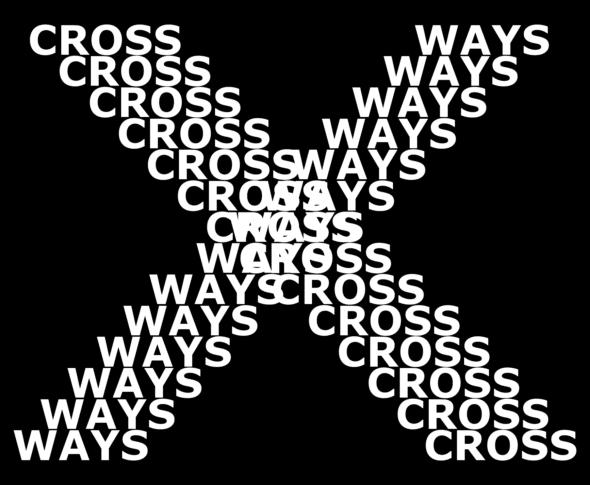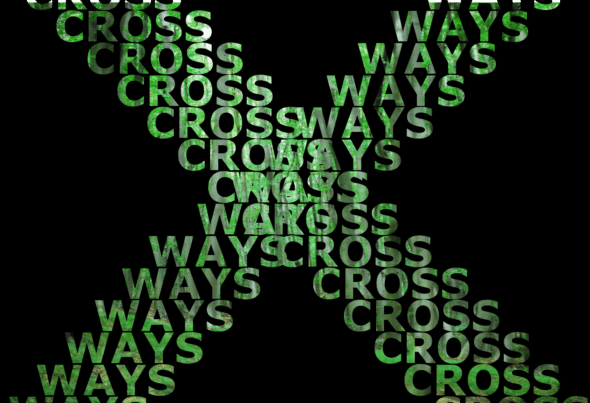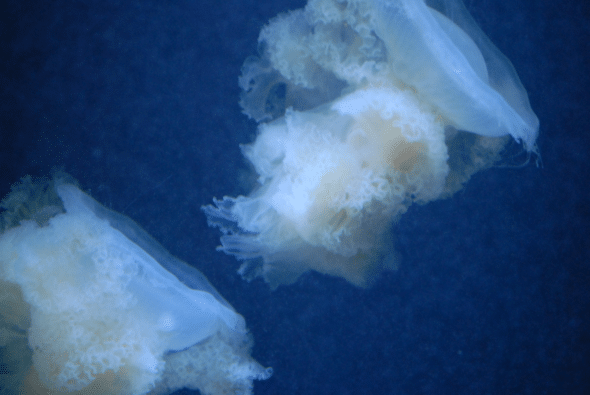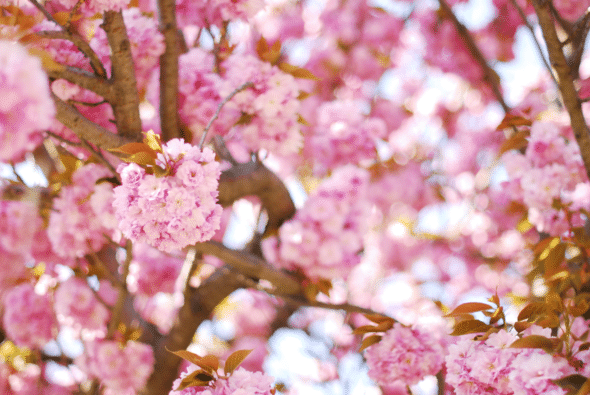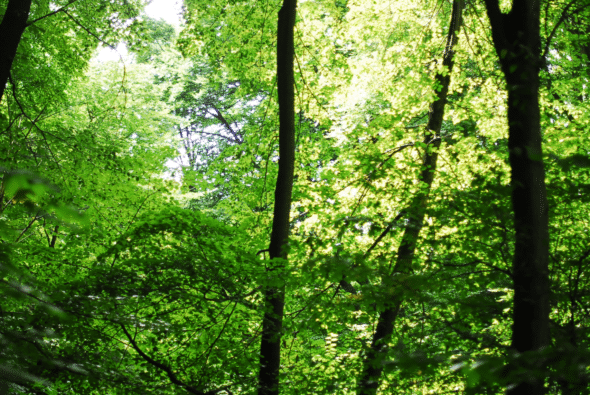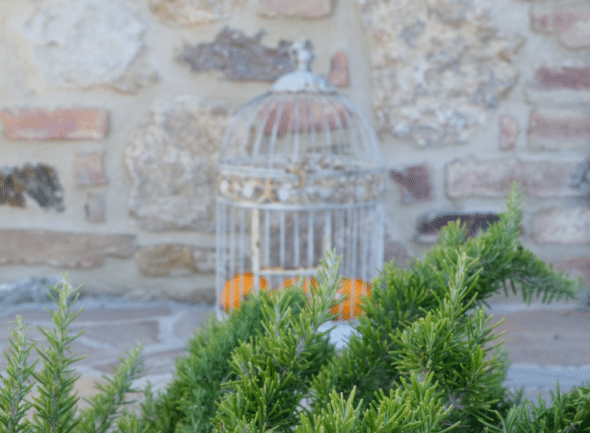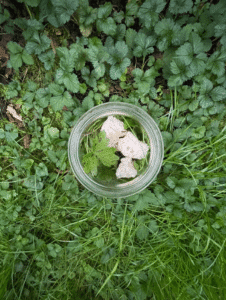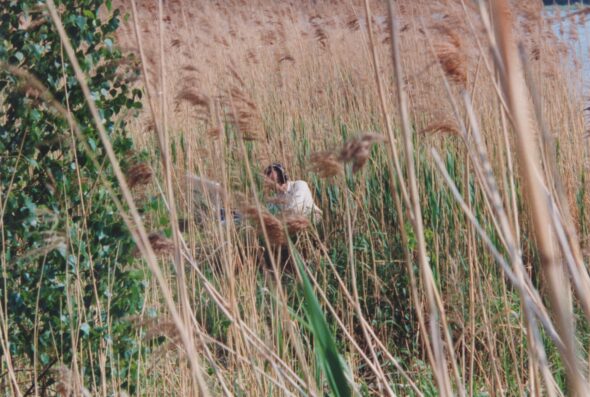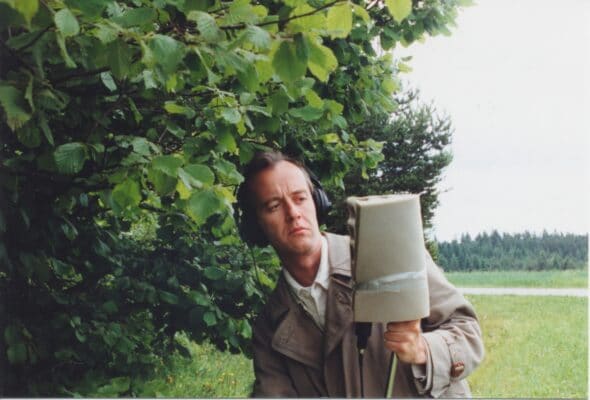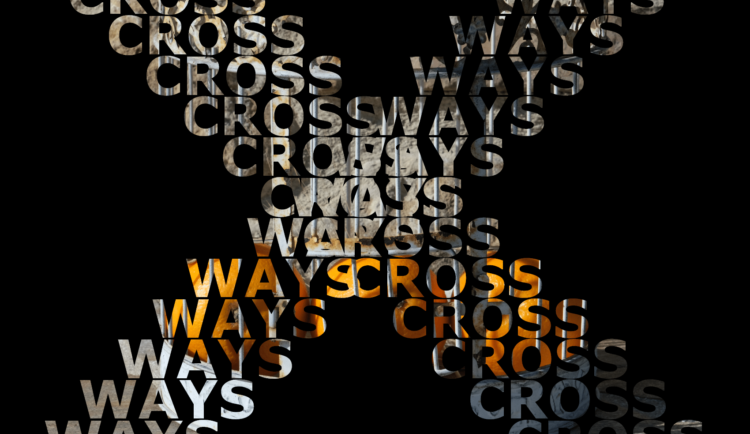
A trans- and interdisciplinary research journey – Chapter 1: Nature
Nature is present in music in a variety of ways. Composers draw inspiration from it, use sounds of nature in their compositions, or make abstract connections to nature. The sounds of nature represent an exciting field of research, to which the US-American musician Bernie Krause has devoted himself extensively. As part of the project “Crossways in Contemporary Music”, Michael Franz Woels went in search of Austrian composers, or composers living in Austria, who establish an individual approach to nature in their music.
For all of music history, composers have been inspired by related art forms, scientific disciplines, the wonder of nature or the supernatural. In order to open up new perspectives and listening experiences, they are continuously breaking new ground. They calculate constellations, observe moods and processes in nature, or enter into collaborations with fellow artists. There are no limits to art. That is why Austrian Music Export and mica – music austria proudly present the article series “Crossways in Contemporary Music”.
“Crossways in Contemporary Music” aims to take a closer look at these mostly unsung connections in contemporary music. Contemporary music in Austria is summarized and connected, chapter by chapter, across a wide variety of areas. These subject areas include nature / dance and choreography / visual arts and installations. Austrian Music Export and mica – music austria will present outstanding works and provide in-depth insights into the diverse working methods of Austrian composers and international artists.
The bioacoustic analysis of soundscapes as a discipline is about forty years old. The musician and naturalist Bernie Krause is considered one of its pioneers. On his research trips around the world, he has documented 15,000 species and over 4,000 hours of different soundscapes from a wide variety of habitats. Shockingly, half of these sound habitats no longer exist today. In his book “The Great Animal Orchestra,” Bernie Krause attempts to trace the origins of music in nature, finding categories for how we can classify the sounds and noises that surround us: “The sounds of geophony were the first sounds on our planet – the element of the soundscape against which all animal voices and even significant aspects of human sound culture were formed.”
In the beginning was water
“As life emerged and simple organisms evolved over millions of years into more complex and vocal creatures, the soundscapes changed. Since life originated in water, the sound produced by this instrument must have been the first heard by any forming responsive organism.”
Geophonies, the natural sounds of non-biological elements such as wind, water, or earth movements were thus continuously augmented by biophonies, the sounds of living organisms. In the process, Bernie Krause encountered an interesting phenomenon during his travels to quite a few wilderness areas. Since the 1980s, he has referred to this phenomenon as the so-called niche hypothesis: “When animals of different species have co-evolved over a long period of time, each acoustic frequency and each time niche is shaped by a particular species. In many habitats, animal voices have evolved in such a way that they do not interfere with the acoustic domain of others.”
The lost sounds
Finally, the bio-acoustician of the first hour calls all man-made sounds and noises anthropophonies. He notices in the course of his preoccupation with sounds and noises in the wilderness: “Studies of natural sounds and their connection with human expressions in music, however, still have the value of rarity.” And what he then deeply regrets at the end of his book, first published in the U.S. in 2012 under the title “The Great Animal Orchestra,” should give us more than pause for thought: “Because we have not paid attention to natural soundscapes until not so long ago, we have missed out on insightful biophonic data that could have been useful in managing our resources, giving us more comprehensive knowledge about the complex role of each individual voice in the overall acoustic mix, about the bioacoustic consequences of global warming for species diversity and density, and about how soundscapes shape our psyche, physique, and culture. “
Nature in New Music
About 16,000 years ago, toward the end of the last cold period, the Earth had the greatest (natural) diversity of sound and noise. Now these geo- and biophonies are successively being replaced by anthropophonies: the natural sounds must give way to those produced by human hands. And although some people are said to be able to perceive and hear even the rotation of the earth, most people in search of extraordinary listening experiences find what they are looking for primarily in compositions in the field of so-called new music. A music-aesthetic term that can be applied as a constitutive term of reflection for contemporary, present, post-tonal and topical music. In order to begin to fathom the current relationship of New Music to the theme of nature, Austrian composers or composers living in Austria were asked to explain in their own words their practice and their relationship to nature.
I think it is important that we are aware of our own acoustic environment. It speaks to us all the time. We embody it. We should listen,” are the haunting words of Vienna-based sound artist and composer Natalia Dominguez Rangel.
In June of this year, she presented her sound intervention “Anamnesis” as part of the SWEET SPOT series. The theme of this year’s SWEET SPOT call was BIOTOP. From all the submissions, the Studio for Electroacoustic Music (SEM) at the University Mozarteum Salzburg selected five sound artists for site-specific works. “Anamnesis” was presented in the garden architecture of the Orangery in the Mirabell Gardens in Salzburg.
Exotic fertility
This sound collage consists of field recordings in the Orangerie garden at sunrise, sunset and at night, interwoven with field recordings from her archive, with sounds from the Amazon region – representing the exoticism of the Orangerie of Mirabell Palace. The floating Papagena soprano voice, intoning texts from Wolfgang Amadeus Mozart’s Magic Flute, refers to the centerpiece of the garden, the Papagena Fountain with its symbolism of fertility. The title “Anamnesis” was chosen by Natalia Dominguez Rangel because the term anamnesis, from the Centre for Research on Sonic Spaces and Urban Environment (CRESSON), stands for the evocative power of sounds that can suddenly recall memories.
Sound Resonances
This year, Natalia Dominguez Rangel is working on Connecting Acoustic Spaces on an occasion-by-occasion basis. “I am addressing how sound affects and resonates with a body physiologically and psychologically, and how critical listening can deepen, broaden, and make connections to other acoustic ecologies, not just anthropophony [all man-made sounds and noises, note]. I am concerned with the way we listen and interpret our environment, especially at this time when we are experiencing a global pandemic, partial lockdowns with different time periods, intensities, and outcomes. During the first lockdown, our urban, acoustic environment had radically changed. I invited people to send me audio recordings of their acoustic environments during this time. The call for the emerging sound sculpture, Connecting Acoustic Spaces, continues through the end of the year due to the ongoing pandemic.”
BECAUSE WE INVENTED MUSIC, NATURE LOOKS MUSICAL TO US
The works of Hannes Dufek, a composer, improviser and organizer from Vienna, range from orchestral, chamber and solo works to music theater in various forms, and include free improvisation as well as various visual representations of music. His thoughts on the conceptual pair – New Music and Nature – serve here as a somewhat more detailed introduction to the subject: “New Music and. In principle, it does not matter what is on the other side of this equation. New music is at the same time open, in principle and to all sides, as it is on the other hand closed in many respects; and cannot grow beyond certain points without (completely) losing its identity as New Music, or as shaped sound, structured noise, whatever. This is ultimately also more of an academic or perhaps philosophical question, but nevertheless holds in itself important insights or points to possibly inescapable characteristics of New Music that allow it to remain recognizable as itself.”
Without being able to elaborate further on what these inescapable characteristics consist of, he goes on to say: “This and in ‘New Music and’ already indicates that it can only refer to so-called “extra-musical”, but cannot become the same. The connection of two obviously foreign contexts to each other is a reference structure, not a transformation. This is perhaps surprising, especially in the case of “nature”, whatever we mean by it, because many tendencies within some past periods and perhaps also in some current approaches of New Music would like to implement at least a clear approximation, perhaps even an approximation to “nature”, or perhaps even better “the natural”. I’m thinking here of microtonality and spectral compositions, on the one hand, but also of realizations of “natural-like” processes in algorithmic composition.” He also refers to Peter Ablinger’s “tree circle” composition, in which the sound of the wind was made audible in specially planted trees. Peter Ablinger himself will have his say later. Hannes Dufek: “Depending on the approach, the result here is closer to the musical sphere of New Music in the narrower sense, which tries its hand at the natural and draws on this as inspiration – or closer to nature; and thus within the musical sphere, rather marginal. But never does one dissolve in the other or do the elements cancel each other out, simply because that is categorically impossible.”
Hannes Dufek feels the relationship between man and nature as follows: “We as humans cannot create nature, and music is one of our creations, not an element that has grown naturally or exists in nature as such. That which seems musical to us in nature – from the buzzing of bees to the sounds of birds, from whale songs to natural wind organs – is not musical per se, but becomes music in our sight. Because we invented music, nature looks musical to us. But, yeah.
In general, New Music, because it is also open, is in many respects very suitable for integrating “nature” into itself, with the limitations mentioned, but nevertheless. I myself find the (apparent) contrast between unformed sound means and sounds – nature-like objects, objects from nature that are integrated into a piece context – very appealing and expressive. The expansion of a piece’s frame of reference with sounds and events that are not fully controllable, also the semantic level of the “not formed” that this adds, the tension between the raw, purely material and the highly specialized musical gesture, all this I find interesting.”
Dufek’s works in the “AUSSEN” (translation: “OUTSIDE”) series deal with the possibility of referring to “reality” in new music as essential starting points: “But especially in the work on “AUSSEN” pieces so far, it has become very clear that whenever it is performed, this framework – which is artificial – overrides everything else. There is then no real nature there, but again only references. How this can be measured seems, to me, difficult to decide, but it is a fact that the stolen time frame, the faked situation, and the fabricated context result in so many restrictions that it doesn’t matter which semantic element becomes a reference, and has to give up its complete identity.”
Hannes Dufek’s concluding reflections loop around back to the beginning: “There it is again, this and. I do use it in a broader context – the natural is just one of the semantic contexts I deal with – but it’s ultimately the same and.” And he concludes with the aside, “Nature, after all, needs nothing from us. No shaping, no framing, no contextualization.”
I UNDERSTAND MY WORKS AS ECOSYSTEMS, BECAUSE FOR MUSIC, THE WHOLE ENVIRONMENT BELONGS TO IT
If Hannes Dufek’s stream of thought is guided by an and, composer and sound researcher Pia Palme directs our attention to the with: “Absolutely music with nature. The word with is important; I never make music about, in, through, or inspired by nature. As a human being I am part of nature, so also as a composer, and that plays into all my pieces. There is no choice. I understand my works as ecosystems, because music includes the whole environment: Performers, instruments, electronic or other technology, places and houses, living and non-living things. Especially in the field of music theater and electronic music, the ecological perspective helps me to better understand and plan the working process and to deal more calmly with interactions and interferences. After all, it’s not far from feminism via diversity to ecology as a fundamental attitude in a global environment, in the Anthropocene. It’s always about with, the larger context, about what that does to people and to my music, as part of a more complex web.”
Some of her pieces are actually anchored in a specific place, such as on MORE RADICALLY with singer Rosie Middleton: “That’s when a tree or a stretch of land can come to the fore, both compositionally and as a visual.” In the new piece WEITERUNG (translated: Furtherance), which premiered in Graz in June with Schallfeld Ensemble as well as Séverine Ballon on cello and Pia Palme on bass recorder, she traced “‘organic’ developments in composition.” The text mentions, among other things, her fascination with a newly forming volcano in Iceland near Reykjavik, whose youthful growth she follows via livestream. In an interview with mica in May, Pia Palme, when asked about the countless imponderables caused by postponed concerts, recognizes a funny word similarity: “In times like these, some things remind me of a pile of compost in which things ferment and decompose – where many things come together, develop a life of their own, and yet something fruitful emerges in the end. After all, composing and compost have such a strikingly similar wording, the same word root …”
Another important component of any composition is the parameter of time. Together with the composers Peter Ablinger, Bernhard Lang and Nader Mashayekhi, the composer and concert organist Klaus Lang is co-founder of the publishing house Zeitvertrieb Wien-Berlin with the peculiar mission statement: “The theme is the deviation from established norms of the aesthetic, the concept of the work, the performance situation, concert conventions, notation, instrument treatment, instrument construction and perception itself”. His thoughts on New Music and Nature: “Just as the world is a process of coming into being and passing away, we as human beings are also a temporal phenomenon: we are the experience of time, we are the time we experience or we are the time we live. Experience of time is, I think, therefore the deepest existential experience.”
For Klaus Lang, who was born in Graz, Austria, experiencing nature is essential. Since childhood, he has spent a lot of time in alpine forests and on mountains. A few years ago he moved to Steirisch Lassnitz, where he still lives. Many of his works reveal a strong reference to nature in the title: “The history of Western art is actually a history of the various ways in which principles found in nature are applied to the creation of art. Scientific methods and artistic techniques demonstrate the ability to understand and master nature and art, but at the same time make clear the futility of these efforts: even if we can explain every single note in a canon by Johannes Ockeghem, we cannot explain the depth of sensory experience and the experienced inner movement we make when listening to this piece of music.”
Music philosophical thoughts of Klaus Lang about the listener lead us to a paradox: “If one concentrates listening on music, which is and wants to be only itself, one can experience the perceived time and thus oneself as unity and center. In this state of listening, however, two seemingly paradoxical processes occur in parallel: when one is completely with oneself, the notion of a self disappears, and analogously, when one experiences time as pure time, it dissolves into an experience of timelessness. And perhaps it is because we are mortal beings with limited lifetimes that we love these states of timelessness. When time stands still for us in the experience of musical beauty, we experience something we cannot find in our world shaped by the experience of transience and loss: Permanence – it is like a breath of eternity that brushes us mortal beings with limited lifetimes. Thus, music allows us to transcend our limits for moments, to be able to find and experience what we long for: the experience of constant duration and eternity.”
IT WAS THE FIRST TIME I REALLY HEARD OUTSIDE OF AN AESTHETIC CONTEXT – LIKE A CONCERT
The Upper Austrian composer Peter Ablinger, creator of a landscape opera as well as a city opera, who has already been mentioned several times, also had his very special epiphany in the 1980s, which he describes as follows: “Once – I think it was 1986, midsummer – while walking through the fields east of Vienna near the Hungarian border – Haydn’s birthplace was nearby – I came across something strange. The grain was standing tall and must have been about to be harvested. The hot summer easterly wind was brushing through the fields and suddenly I heard the rustling. Although it has been explained to me many times, I still can’t tell how wheat and rye plants differ from each other. But I heard the difference. I think it was the first time I really heard outside of an aesthetic context – like a concert. Or it was the first time I heard at all? Something had happened. Before and after were categorically divorced, no longer had anything to do with each other. At least, that’s how it seemed to me at the time. In retrospect, I recognize/remember other comparable experiences that have to do with a jarring opening of perception, but the walk through the cornfields was perhaps the most consequential. Because in one way or another, it seems to me, all the pieces I’ve done since then have to do with that experience.”
The first sound installation in public space, which the composer and pianist Elisabeth Harnik, realized together with the architect Milena Stavric and the acoustician Jamilla Balint in the Graz Cultural Year 2020, also goes back to “a sensual experience I had during a hike. A sound that seems everyday, the buzzing of bees, was realigned through the walls of a ruin and transformed into a profound listening situation.” The so-called Humming Room drew on this unique experience of nature, both in the conception of the paravent-like sound sculpture and in the composition Feed the Bees for oboe, hummel [a Renaissance bagpipe, note], and sound installation.
“I see the Humming Room as a perceptual installation in a double sense: it invites active listening and, at the same time, raises awareness of the interconnectedness of humans and honeybees,” Elisabeth Harnik explains, continuing, “As a composer, I deal with a wide variety of processes of listening. Sometimes it’s very concrete auditory impressions whose traces I extract and transform during the composition process.” During the lockdown 2021, drummer friend Tim Daisy invited her to participate in his CD project Imaginary Rooms: “As I was working on my piece, the common toads returned to our pond to spawn – as they do every year around this time. The sound of the toads was impressive; I made recordings over several days. Listening to the field recordings, I discovered even more subtleties: there were distant bird sounds corresponding with the multi-layered toad sounds, and much more. I was impressed. Eventually, I incorporated excerpts of the recordings into my piece, Toads and Birds.”
FOR ME, A MOMENT OF GREAT SONIC MAGIC
The composer Peter Jakober has been checking out the Prater meadows in Vienna. For the performance “ORACLE and SACRIFICE in the woods” by the director and artist Claudia Bosse – which will have its premiere in the Prater Park in Vienna in the spring of 2022, and which is already being intensively rehearsed this year – he was able to develop a piece for 15 – 20 organ pipe players: “The players blow on the labium of the organ pipe. The result is a rushing sound with pitch coloration. This generated noise of the pipes enters into an interplay with the wind sounds of the forest. If the possible acoustic reproduction of the natural noise of the forest by an instrument already creates an alienation, this is forced by the different pitch colorations of the “pipe noise sounds”. At the end of the piece, the performers blow into the foot hole of small, tall organ pipes. Thus, they blow the pipe where the airflow is usually supplied. The result is a high organ sound. The movement apart of the performers, who repeatedly blow into these high pipes, creates the impression that the forest itself becomes the interior of an instrumental sound body. An acoustic mapping of nature, and a resulting, increasing intensification of this alienation: For me, a moment of great sonic magic.”
The composer and viola player Julia Purgina also tries to trace the magic of nature and, in particular, forest sounds: “Nature and its sounds surround us. Far too rarely do I stop and just listen. Hear the birds and have to laugh at the cheerful persistence of their song; hear the water with its constant gurgling and rushing; hear the rustling of leaves in the forest when the wind indispensably brushes through the treetops. And then I think to myself that these very sounds were heard thousands of years ago, and I feel a great connection to this primordial music that has always been there and – unless we humans break everything – will always be there.” An ensemble piece from 2014 by Julia Purgina, in which this connection is well expressed, is “Kodama”: “The word is ambiguous and on the one hand means echo, on the other hand the Japanese fast trains are named so, but also in Japanese mythology there is this term for forest spirits. When the undergrowth cracks, the leaves rustle and other sounds of the forest are heard, one suspects that these forest spirits are behind them. In my piece “Kodama” this world of nature and the technologized present meet and merge into a common world of sound: connected with what has existed for millennia and what we humans have only been developing for a few decades and which also threatens this ancient world.”
PART 5: SEBASTIAN FRISCH
The sound artist and dub musician Sebastian Frisch is currently producing an art film for the Climate Alliance Upper Austria, in which the change of the auditory environment in Alpine regions is thematized: “Nature in music, for me, always has a connotation of beautiful chaos, individuality and infinite possibilities within a framework set by the laws of nature. Be it in the direct use of acoustic sounds, or indirectly in instrument making through natural materials like wood, leather, stone,…” In his work “Splits and Cracks,” for example, he experiments with the acoustic properties of a slice of spruce wood in which heating wire is woven. When electricity is applied, the wire heats up, the moisture in the wood decreases, and the wood begins to crack.
Like the sound artist Natalia Dominguez Rangel mentioned at the beginning, Sebastian Frisch also showed a 16-channel audio installation in the Mirabellgarten Salzburg this June: “I am fascinated, above all, by natural processes that are difficult or impossible for our human ears to perceive. For this I build instruments that allow me to take them off and use them as material for my artistic creations. In the work “Woodscape” I play with the acoustic development cycle of the biotope wood. The journey begins with the initial bursting of the seed, a kind of big bang for the universe of the tree: from the growth phase, in which xylem cells draw water through the bark, to the infestation of the tree by fungi and insects, to the decay process and the drying of the wood, when the wood fibers unravel, split, crack and pass back into the surrounding habitat.”
For Sebastian Frisch, as for many other composers, nature is “an immeasurable treasure of acoustic expression.” For him, the recorded extra-musical sounds are “snapshots and artifacts of an acoustic ecology, in an environment rapidly changing due to climate change.” For all fine-hearted people, for all people sensitive to unusual sounds, he tries, like many other composers – not only from the environment of new music – “to reveal poetic elements of our fascinatingly detailed world.”
Michael Franz Woels
Links:
Crossways in Contemporary Music
Translated from the German original by Arianna Fleur

